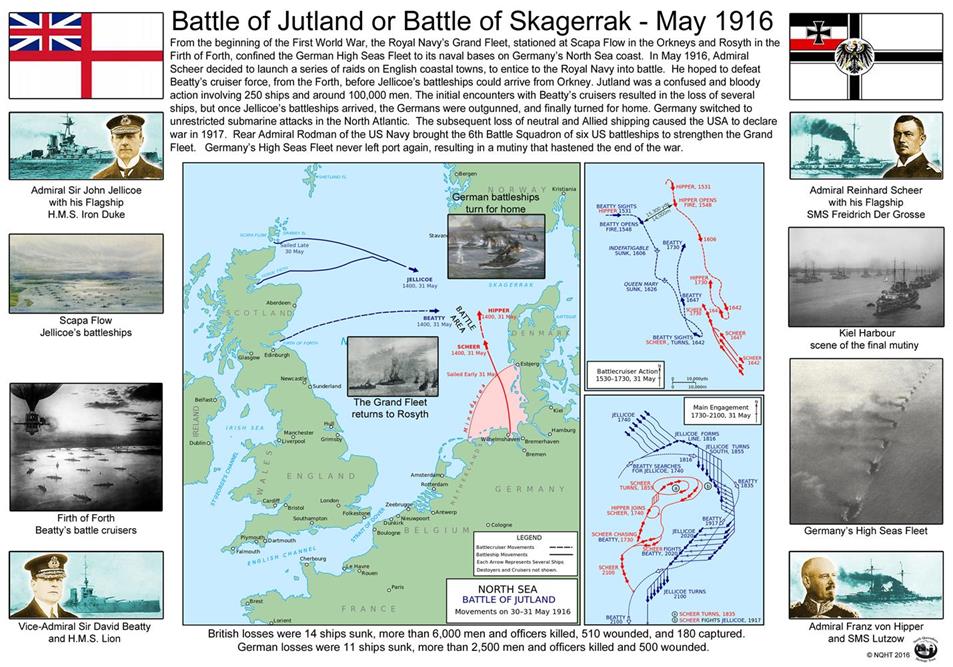High Seas Fleet Surrender 14 – The Battle of Jutland – May 1916
| < 13 – North Sea Naval Battles | Δ Index | 15 – Destroyer pens at Port Edgar > |

Jutland was a confused and bloody action involving 250 ships and around 100,000 men.
The initial encounters with Beatty’s cruisers resulted in the loss of several ships, but once Jellicoe’s battleships arrived the Germans were outgunned and finally turned for home.
 HMS Iron Duke opening fire by Lionel Wyllie
HMS Iron Duke opening fire by Lionel Wyllie
 Destruction of HMS Black Prince by Willy Stoewer
Destruction of HMS Black Prince by Willy Stoewer
 Torpedo Boats on Manoeuvre by Willy Stoewer
Torpedo Boats on Manoeuvre by Willy Stoewer
14 British ships sank, 6,000 men were killed, 510 wounded and 180 captured.
11 German ships sank, 2,500 men were killed and 500 wounded.
(Many British ships were sunk by magazine explosions; the lessons of Heligoland Bight had only been learned by the High Seas Fleet.)
Germany claimed a propaganda victory over the Grand Fleet, but in reality it took months to repair the damage to the High Seas Fleet, while Jellicoe was able to declare that the Grand Fleet was ready to put to sea again four hours after returning to base.
Germany resumed unrestricted submarine attacks in the North Atlantic. The subsequent loss of neutral and Allied shipping was one of the factors that led to the USA declaring war on Germany in 1917.
Nick Jellicoe – grandson of Admiral Jellicoe – has written a book about the battle, and has created an excellent website about The Battle of Jutland. This includes a video animation which explains the complex series of events.
| < 13 – North Sea Naval Battles | Δ Index | 15 – Destroyer pens at Port Edgar > |